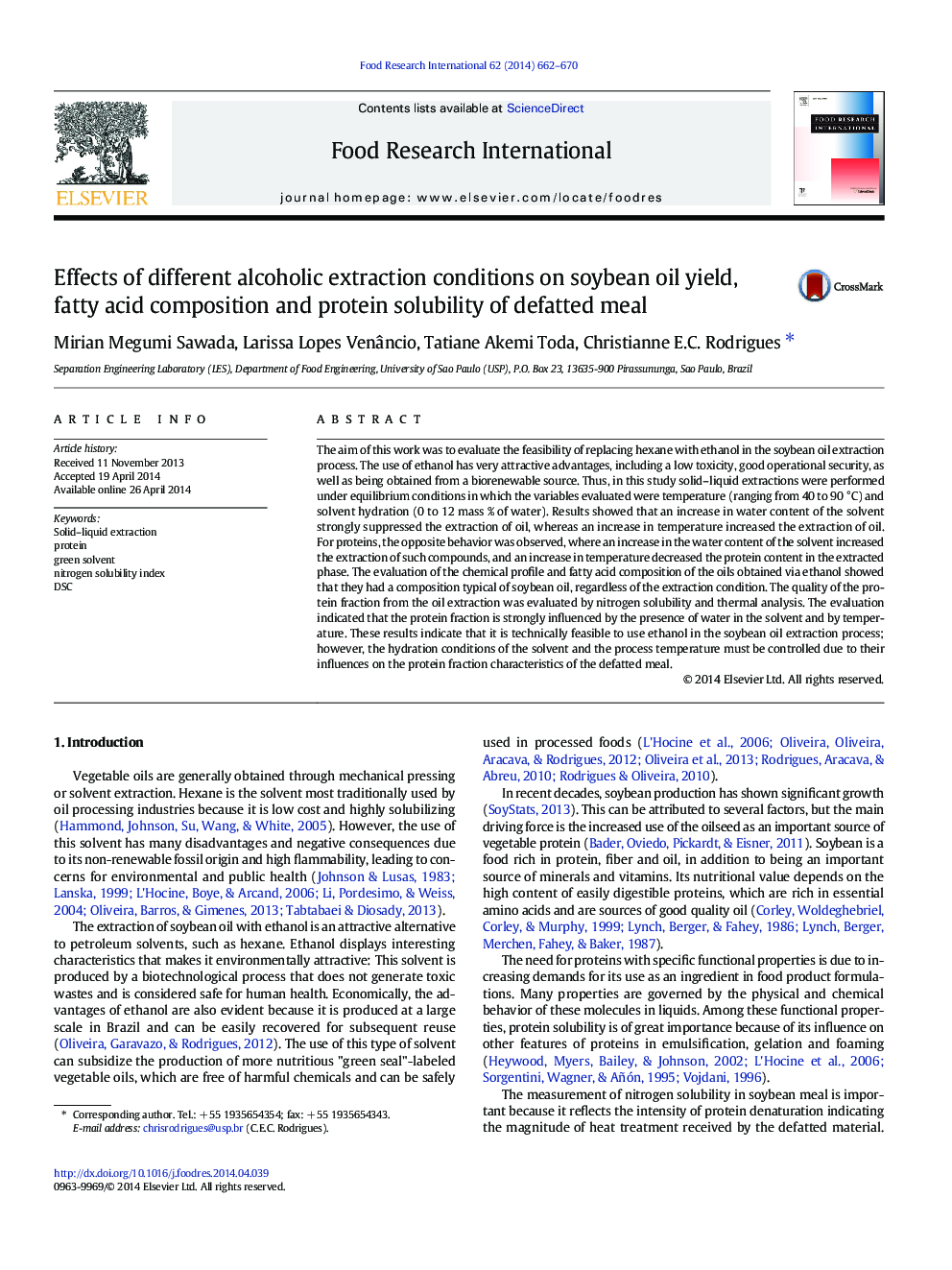| Article ID | Journal | Published Year | Pages | File Type |
|---|---|---|---|---|
| 6395903 | Food Research International | 2014 | 9 Pages |
â¢Replacement of hexane by a renewable solvent.â¢Extraction of soybean oil using ethanol.â¢Effects of the extraction conditions on the oil and protein yield.â¢Quality of the protein fraction expressed as nitrogen solubility and thermal analysis.â¢Solvent hydration influences the defatted protein fraction characteristics.
The aim of this work was to evaluate the feasibility of replacing hexane with ethanol in the soybean oil extraction process. The use of ethanol has very attractive advantages, including a low toxicity, good operational security, as well as being obtained from a biorenewable source. Thus, in this study solid-liquid extractions were performed under equilibrium conditions in which the variables evaluated were temperature (ranging from 40 to 90 °C) and solvent hydration (0 to 12 mass % of water). Results showed that an increase in water content of the solvent strongly suppressed the extraction of oil, whereas an increase in temperature increased the extraction of oil. For proteins, the opposite behavior was observed, where an increase in the water content of the solvent increased the extraction of such compounds, and an increase in temperature decreased the protein content in the extracted phase. The evaluation of the chemical profile and fatty acid composition of the oils obtained via ethanol showed that they had a composition typical of soybean oil, regardless of the extraction condition. The quality of the protein fraction from the oil extraction was evaluated by nitrogen solubility and thermal analysis. The evaluation indicated that the protein fraction is strongly influenced by the presence of water in the solvent and by temperature. These results indicate that it is technically feasible to use ethanol in the soybean oil extraction process; however, the hydration conditions of the solvent and the process temperature must be controlled due to their influences on the protein fraction characteristics of the defatted meal.
